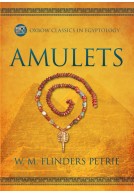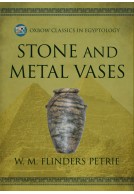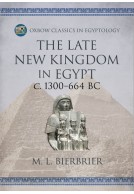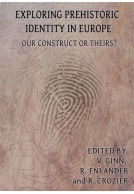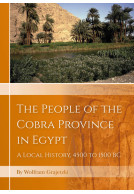Ancient Weights and Measures (Paperback)
By
Sir W M Flinders Petrie
Imprint: Oxbow Books
Series: Oxbow Classics in Egyptology
Pages: 110
Illustrations: Fully illustrated
ISBN: 9798888570104
Published: 15th February 2023
Script Academic & Professional
Imprint: Oxbow Books
Series: Oxbow Classics in Egyptology
Pages: 110
Illustrations: Fully illustrated
ISBN: 9798888570104
Published: 15th February 2023
Script Academic & Professional
You'll be £24.95 closer to your next £10.00 credit when you purchase Ancient Weights and Measures. What's this?
+£4.99 UK Delivery or free UK delivery if order is over £40
(click here for international delivery rates)
Need a currency converter? Check XE.com for live rates
(click here for international delivery rates)
Need a currency converter? Check XE.com for live rates
This facsimile volume of detailed catalogues prepared by Sir Flinders Petrie of ancient weights and measures, is based on examination of over 4,000 Egyptian weights within his collections. Eight standards have been identified and are described. The text discusses forms, multiples and fractions of standard weights, materials, and evidence for the adoption of different standards. A much smaller collection of steelyards, measures of capacity, lineal measures, and balances is also described and illustrated.
This volume is part of a new series comprising facsimile re-issues of typological catalogues produced between 1898 and 1937 by W. M. Flinders Petrie, based on his vast collection of Egyptian artefacts. Mostly excavated by Petrie during many seasons of campaign in the latter years of the 19th and early decades of the 20th century, these artefacts now reside in the Petrie Museum at University College, London. Long out of print, the catalogues were re-issued in facsimile by publishers Aris & Phillips in the 1970s alongside newly-commissioned titles, based on more recent examination of elements of the Petrie Collection by contemporary experts. The Oxbow Classics in Egyptology series makes a selection of these important resources available again in print for a new generation of students and scholars.
There are no reviews for this book. Register or Login now and you can be the first to post a review!
About Sir W M Flinders Petrie
Sir William Matthew Flinders Petrie (1853–1942) was a pioneer in the field of ‘modern’ archaeology. He introduced the stratigraphical approach in his Egyptian campaigns that underpins modern excavation techniques, explored scientific approaches to analysis and developed detailed typological studies of artefact classification and recording, which allowed for the stratigraphic dating of archaeological layers. He excavated and surveyed over 30 sites in Egypt, including Giza, Luxor, Amarna and Tell Nebesheh.
More titles by Sir W M Flinders Petrie
Customers who bought this title also bought...
Other titles in the series...
Other titles in Oxbow Books...










